London Bridges

New London Bridge built in the 1960's.
The site of the city of Londinium was inevitable once the Romans had decided, in A.D 43, to build a crossing over the Thames. The most efficient way to bridge it was where there was a narrow spit of hard ground in the marshes on the north bank of the Thames. The bridge could be deployed to carry the army over the crossing from south to north. This is where the Romans built their capital city - Londinium -where the road network from Exeter to Hadrian's wall could be centred. London Bridge was the first Thames crossing from the Surrey side to the City of London.
The Roman city was still worth saving when the Normans fortified the river crossing in 1087 - where the Normans used stone imported from France. Many of the Parish churches date from this time, most built within the Roman wall. By the year 1349, half the population of England was killed by the 'Black Death'.
By the 16th century, England had a population of around three million people. London had increased in population from 120,000 - in mid-century - to 200,000 in 1600. London was a vast building site, with every space being used up. So houses on a new bridge was an ideal proposition.
It was not too long before it had houses and shops built onto it. Traitors head were also impaled on it in mockery with paper crowns donned. The old London Bridge, was the pride of the City for nearly six hundred years, the scene of countless historic events, legends, stories and verses. It disappeared so completely that hardly a stone remains. Since its demolition in 1832, most of the debris was thrown into the river.
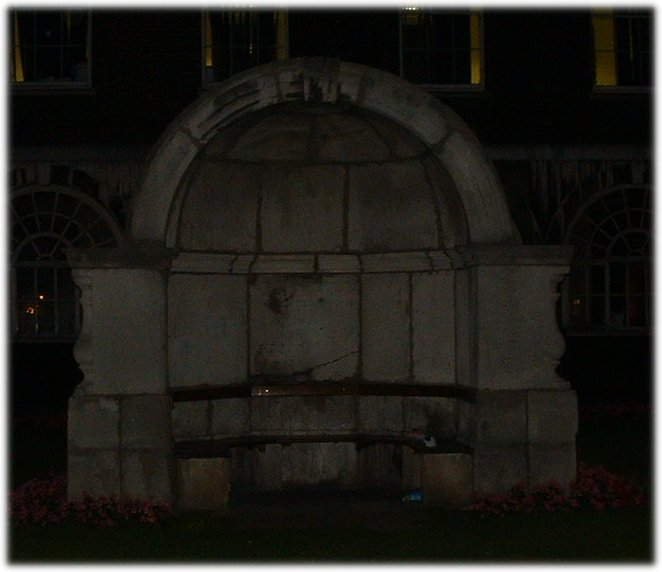
One of the few remains of the medieval London Bridge, this alcove is in the courtyard of Guy's Hospital. The other alcove is in Victoria Park East London.
Surprisingly a few pieces are still to be found, in the courtyard of Guy's hospital, one of the alcoves from the old bridge still remain (as shown above). Two more can be found in a far corner of Victoria Park in east London. Little else survived the destruction.
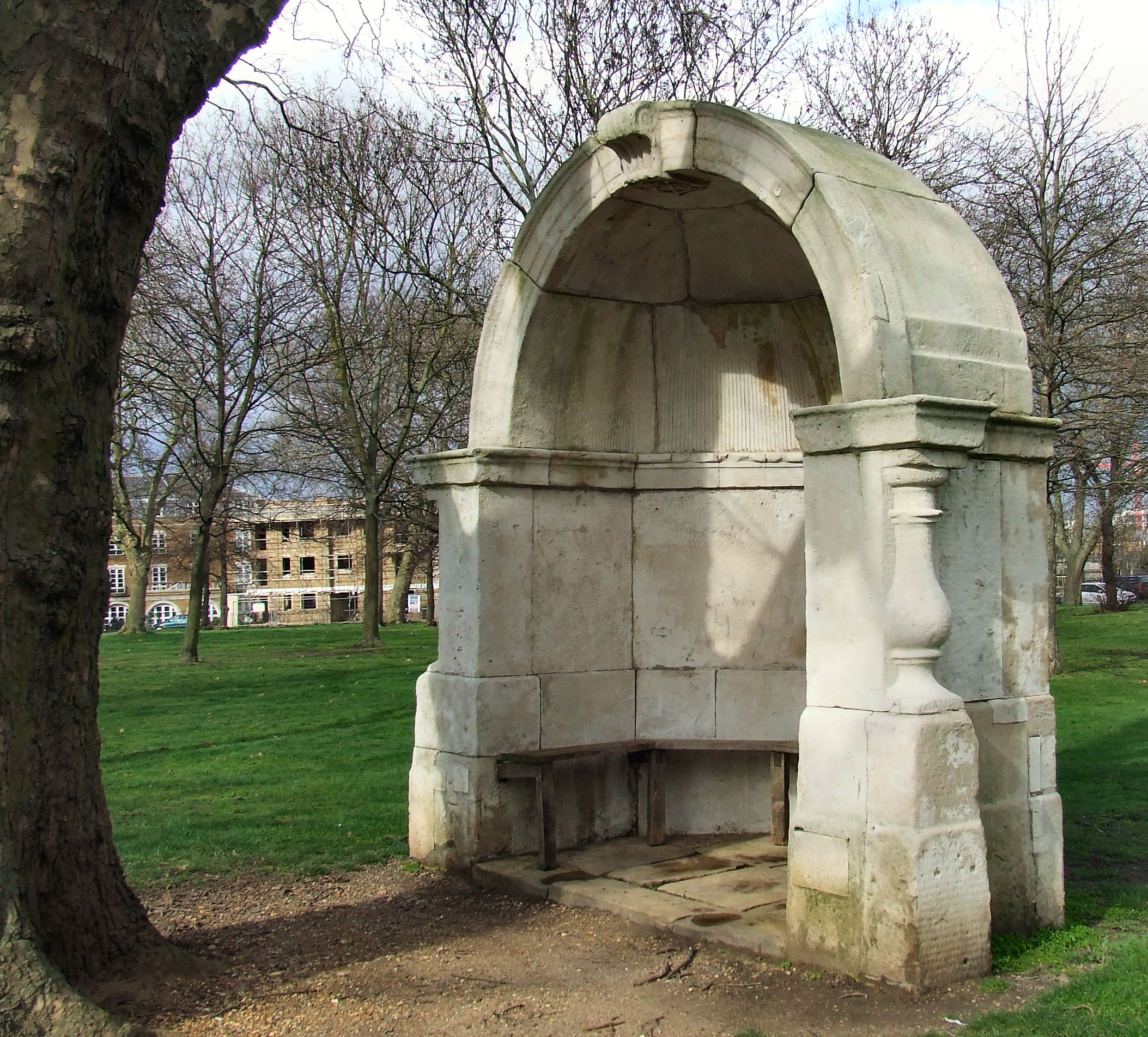 An alcove seat from Old London Bridge (above) with the inside inscription (below)
An alcove seat from Old London Bridge (above) with the inside inscription (below)
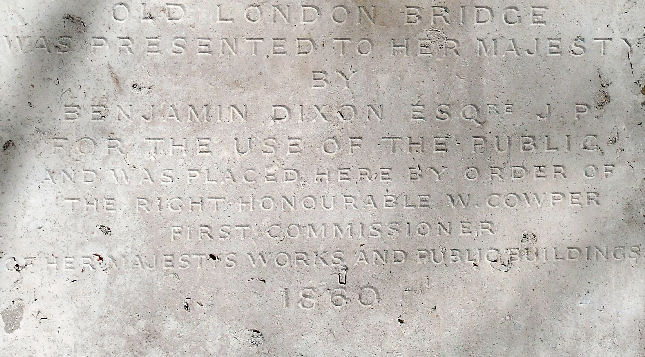
The River Thames, the most famous river of this island, runs from Kemble in Gloucestershire and flows to the Thames Estuary at Southend-on-Sea, a distance of 215 miles. The most famous bridge on the River Thames is Tower Bridge - often called London Bridge by Americans, and it was through this mistake that when bidding for London Bridge they thought that they were buying this one.

Tower Bridge was built in 1894 and looks the most impressive of the Thames Bridges.
At the Tower Bridge Exhibition you can enjoy breathtaking views from the high-level walkways and learn about the history of Tower Bridge and how it was built. You can then visit the Victorian Engine Rooms, home to the original steam engines that used to power the lifts.
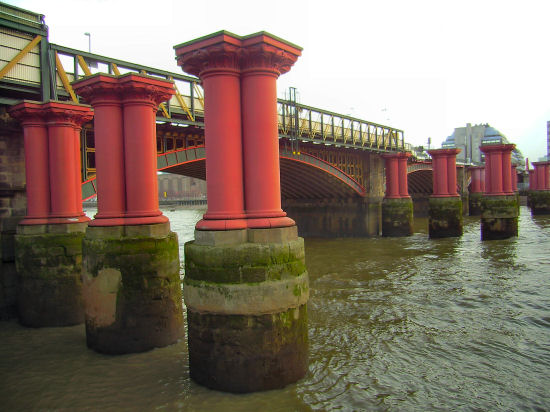 Remains of The London, Chatham and Dover Railway (LCDR) bridge, built in 1864 and designed by Joseph Cubitt. These stumps stand alongside the
1886 bridge that was designed by John Wolfe-Barry and Henri Marc Brunel and is still in use today.
Remains of The London, Chatham and Dover Railway (LCDR) bridge, built in 1864 and designed by Joseph Cubitt. These stumps stand alongside the
1886 bridge that was designed by John Wolfe-Barry and Henri Marc Brunel and is still in use today.
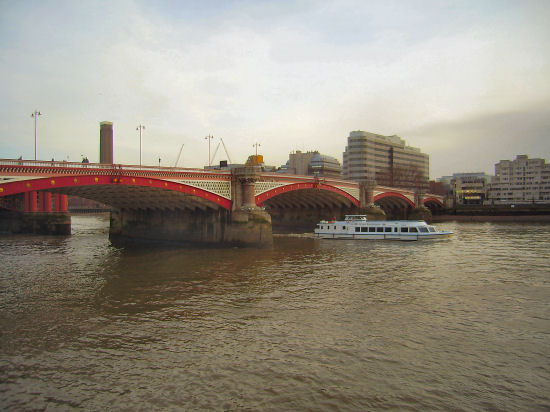 Built to a design by Joseph Cubitt, Blackfriars Bridge was completed in 1869 with five wrought iron arches.
Built to a design by Joseph Cubitt, Blackfriars Bridge was completed in 1869 with five wrought iron arches.
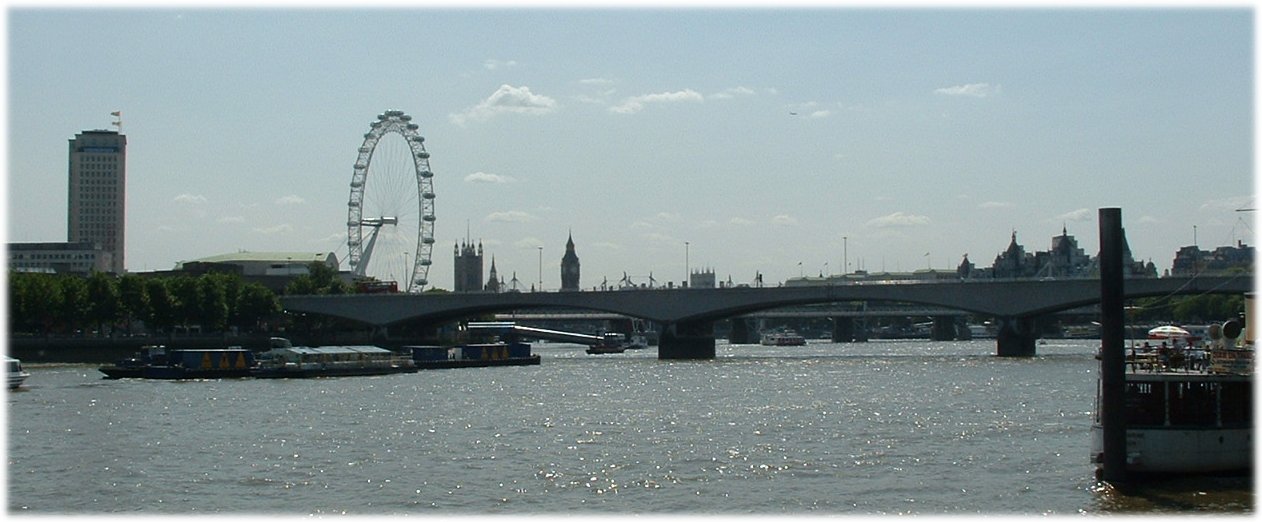 Waterloo Bridge
Waterloo Bridge
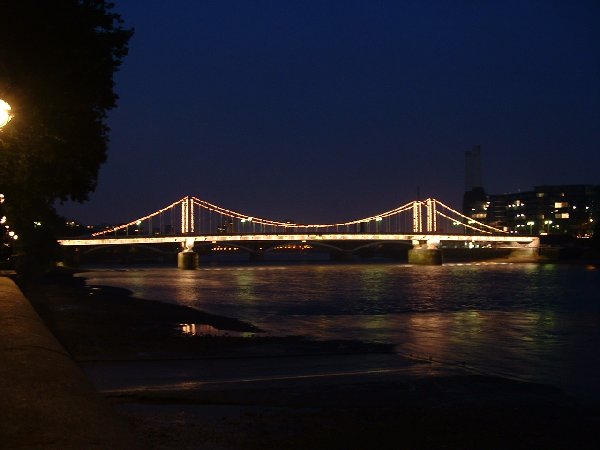 Chelsea Bridge with the illuminations at night.
Chelsea Bridge with the illuminations at night.One of London's best bridges to see at nightfall this romantic bridge that crosses the Thames. Historians who have discovered Roman shields and swords here believe that Roman's first crossed the Thames here on the way to London, as it was easier to ford.

Albert BridgeNamed after Prince Albert, this has to be one of the best bridges on the Thames.
London Time

Follow Us
The contents of this website are the property of knowledgeoflondon.com and therefore must not be reproduced without permission. Every effort is made to ensure the details contained on this website are correct, however, we cannot accept responsibility for errors and omissions.
© Copyright 2004 -
Contact Us | Advertise